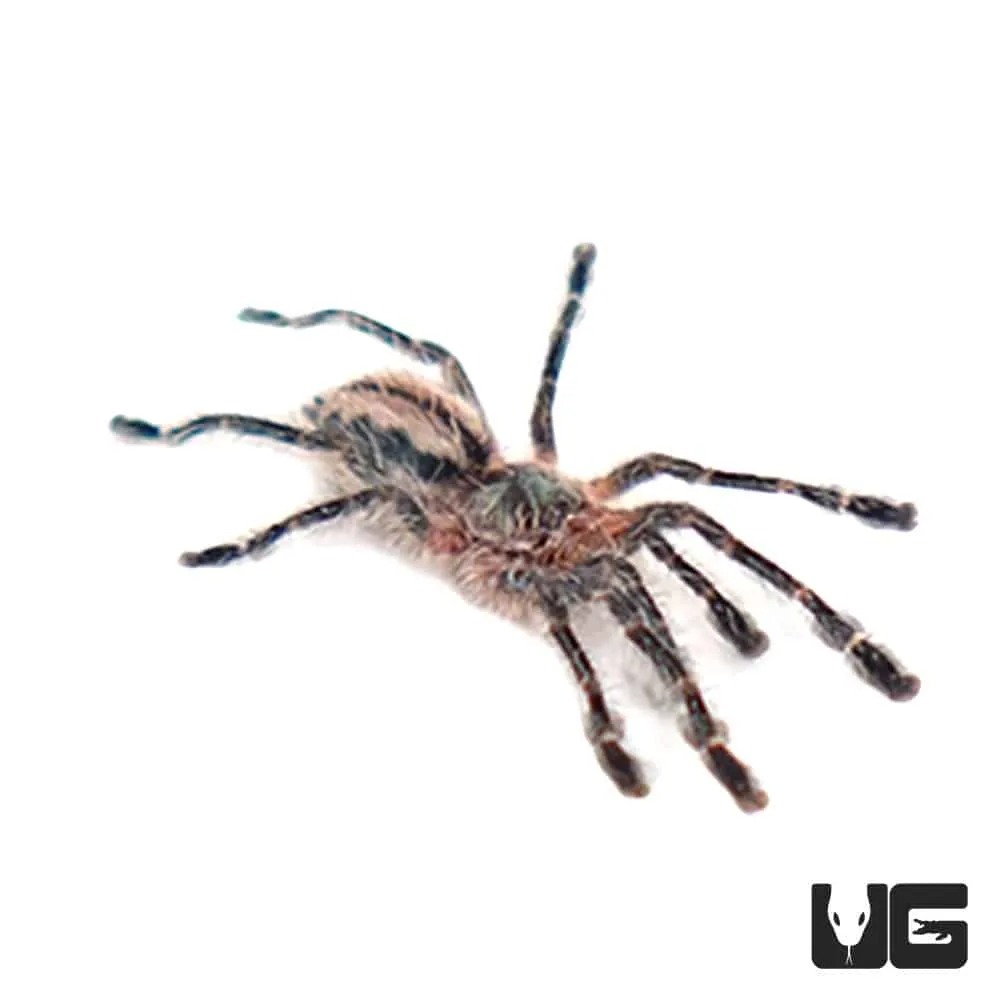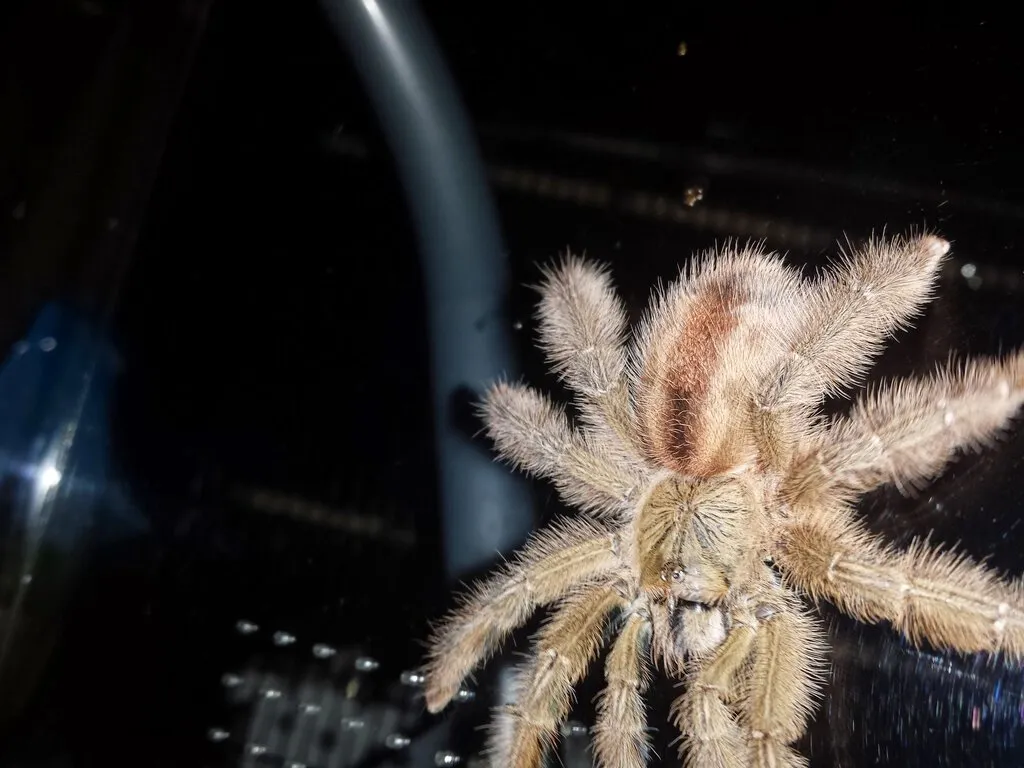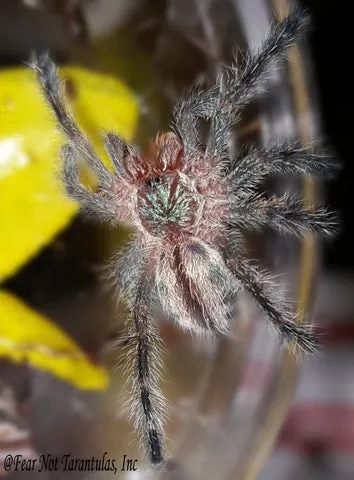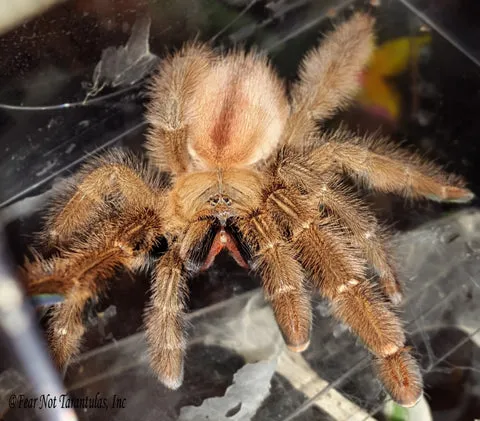Amazon Ribbed Tarantula Facts
The Amazon Ribbed Tarantula, scientifically known as Ephebopus murinus, is a fascinating and often misunderstood arachnid. Known for its unique appearance and intriguing behaviors, this tarantula species captivates both novice and experienced hobbyists alike. This article dives into the top 5 facts about the Amazon Ribbed Tarantula, providing a comprehensive overview of its characteristics, habitat, diet, and behavior. Understanding these aspects is crucial for anyone considering keeping one as a pet or simply wanting to learn more about these incredible creatures. From their distinctive appearance to their defensive mechanisms, we will explore the key features that make the Amazon Ribbed Tarantula a truly remarkable species.
Appearance and Characteristics
The Amazon Ribbed Tarantula is easily recognizable due to its distinctive appearance. Its body is generally covered in a dark brown to black coloration, providing excellent camouflage in its natural environment. The carapace, or the upper part of the cephalothorax, often displays a subtle pattern of lighter markings. One of the most notable features of this species is the presence of prominent urticating hairs on its abdomen. These hairs are a key part of the tarantula’s defense mechanism and can cause significant irritation if they come into contact with human skin. The legs are typically long and slender, allowing for agility and efficient movement. The overall appearance is robust, with a somewhat flattened body shape that adds to its unique appeal.
Identifying Features

Identifying the Amazon Ribbed Tarantula involves focusing on several key features. The overall size and coloration are crucial; they are typically medium to large-sized tarantulas. Examine the carapace for patterns and the abdomen for the presence of urticating hairs. Leg length and body proportions also play a significant role in identification. Experienced keepers often look for the specific arrangement of the eyes, which can provide a definitive clue. Comparing the tarantula’s characteristics with detailed images and descriptions of the Ephebopus murinus species is the most reliable method for accurate identification, ensuring you correctly identify this fascinating species.
Size and Lifespan
The Amazon Ribbed Tarantula has a lifespan that varies depending on factors such as sex and care conditions. Females typically live longer than males. Female Amazon Ribbed Tarantulas can live for 10 to 15 years, while males usually have a lifespan of around 3 to 5 years. In terms of size, adult Amazon Ribbed Tarantulas typically reach a leg span of about 4 to 6 inches. The size of the tarantula can also depend on factors like diet and environmental conditions. Providing proper care, including adequate food, temperature, and humidity, is critical in ensuring a long and healthy life for your tarantula.
Habitat and Distribution
The Amazon Ribbed Tarantula is native to the rainforests of South America. They are primarily found in the Amazon basin, which encompasses countries such as Brazil, French Guiana, and Suriname. These tarantulas thrive in humid, tropical environments where they can find suitable shelter and a consistent supply of prey. The distribution of Ephebopus murinus is relatively localized within these regions, often favoring areas with dense vegetation and moist soil. Understanding their natural habitat is key to replicating their ideal living conditions in captivity, ensuring their health and well-being.
Natural Environment

In their natural habitat, Amazon Ribbed Tarantulas are ground-dwelling spiders that prefer to live in burrows. They construct these burrows under leaf litter, rocks, and other debris, providing them with both shelter and protection from predators and the elements. The natural environment is characterized by high humidity levels and a temperature range that remains consistently warm throughout the year. The rainforest floor, rich in organic matter, provides an abundance of insects and other invertebrates, forming the tarantula’s primary food source. They are well-adapted to their surroundings, utilizing their cryptic coloration to blend in with the forest floor and ambush prey.
Geographic Range
The geographic range of the Amazon Ribbed Tarantula is primarily centered around the Amazon rainforest. This range includes regions within Brazil, French Guiana, and Suriname. Their presence is particularly notable in areas with dense, undisturbed forests, where the environmental conditions are most favorable. While they are not considered an endangered species, understanding their limited distribution emphasizes the importance of habitat preservation. Conservation efforts are crucial to maintain their natural environment and to ensure the continued health and survival of these fascinating creatures within their native ecosystems.
Diet and Feeding Habits
Amazon Ribbed Tarantulas are carnivores, and their diet primarily consists of insects and other invertebrates. In the wild, they hunt a variety of prey, including crickets, beetles, and smaller spiders. Their hunting strategy involves ambushing their prey from their burrows or concealed positions. The tarantula injects venom to subdue its prey, then uses digestive enzymes to break down the tissues, allowing it to consume the liquefied contents. Their feeding habits are opportunistic, and they will readily consume any suitable prey that comes within their reach. Providing a varied and appropriate diet is essential for captive tarantulas to ensure they receive the necessary nutrients for growth and overall health.
Prey and Hunting Strategies

The prey of Amazon Ribbed Tarantulas typically includes insects such as crickets, mealworms, and roaches. In captivity, these are common choices for feeding. Their hunting strategy relies on stealth and ambush. They typically wait for their prey near the entrance of their burrows or within a hidden position. When prey comes close, the tarantula quickly strikes, injecting venom to immobilize the insect. The venom both paralyzes the prey and begins the process of pre-digestion. Once the prey is subdued, the tarantula will then consume the soft tissues of the insect. This hunting behavior demonstrates the tarantula’s efficient adaptation to its environment.
Feeding Frequency
The feeding frequency for Amazon Ribbed Tarantulas varies depending on their age and size. Spiderlings and juveniles should be fed more frequently, typically every 3 to 7 days. Adult tarantulas can be fed less often, about once every 7 to 14 days, or even longer, as they can go for extended periods without food. It’s essential to monitor the tarantula’s abdomen size as an indicator of its feeding needs. A well-fed tarantula will have a plump abdomen, while a slender abdomen might indicate that it is underfed. Always remove any uneaten prey after 24 hours to prevent potential stress or harm to the tarantula. Water should be available at all times.
Behavior and Temperament
Amazon Ribbed Tarantulas are known for their unique behaviors and, in some cases, their defensive temperaments. They are generally secretive creatures, preferring to remain in their burrows or under cover. They are not usually aggressive, but they will defend themselves if they feel threatened. Understanding their behavior is crucial for handling and caring for them properly. Their temperament can vary between individual tarantulas, but it’s important to always approach them with caution. Observational skills help you assess their mood and avoid unnecessary stress or potential defensive actions.
Defensive Mechanisms

Amazon Ribbed Tarantulas have several defensive mechanisms to protect themselves from predators. One of the most notable is the use of urticating hairs, which they flick at potential threats. These hairs, which are located on their abdomen, can cause skin irritation and discomfort upon contact. They also possess venom, which they use to subdue prey and defend themselves. Although their venom is not typically considered lethal to humans, it can cause localized pain, swelling, and other symptoms. Additionally, their cryptic coloration and habit of hiding in burrows provide them with camouflage and shelter, further aiding in their defense.
Typical Behavior
The typical behavior of Amazon Ribbed Tarantulas includes a preference for hiding, especially during the day. They are primarily nocturnal hunters, becoming most active during the night. They will spend a considerable amount of time constructing and maintaining their burrows. When disturbed, they may retreat into their burrows or exhibit defensive behaviors, such as raising their front legs and displaying their fangs. In captivity, they can be observed feeding, molting, and occasionally exploring their enclosures. Understanding their behavior is essential for providing a suitable environment and ensuring their well-being.
In conclusion, the Amazon Ribbed Tarantula is a captivating species with unique characteristics, habitats, dietary needs, and behavioral traits. Understanding these elements is fundamental to both appreciating and properly caring for these fascinating arachnids. From their intriguing defensive mechanisms to their specific environmental requirements, the Amazon Ribbed Tarantula offers a compelling subject of study for anyone interested in the world of spiders. Whether you’re a seasoned hobbyist or a curious enthusiast, the Amazon Ribbed Tarantula presents a remarkable glimpse into the diversity and adaptability of life in the Amazon rainforest.
